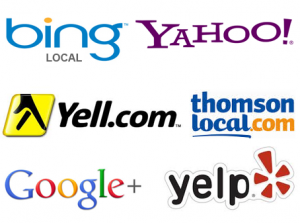Some people are happy spending their lives working for a company or business, and that’s fine. For others, the idea of always working for someone else feels wrong. They may believe they can bring something new and exciting to the business market, or they may simply want the financial freedom of being wholly responsible for their own income.
For those who want to build their own business, from micro to massive, estimating the cost of starting your business is the one of the first steps in your business planning. The average cost of starting a new business from scratch at just over $ 30,000, however, that really depends on your business model and your chosen industry.
Here is what you can do to calculate your startup costs.
Start with your expenses
To build a business, the first thing you need to understand is your expenses. When you’re starting a business from zero, you tend to have expenditures long before you have income.
If you’re starting a small freelance business out of your home, this may be as simple as making sure your laptop or computer is up to date and can handle the workload you’re giving it. For a business that needs a physical office, however, the upfront costs can be more intense. Consider:
- Potential monthly rent at several different spaces
- Market research to determine where your business is best located
- Startup marketing costs like website design and building, logo design, printed materials, and more
- Legal fees to incorporate or establish your business
- Any wages paid to employees hired before your grand opening
- Any franchise fees or build out costs
- Renovation or build costs on either your home or your location
- Any large capital purchases, such as a company car or vehicle, a better computer system or IT equipment, inventory, or manufacturing tools.
One expense that companies often forget is their communication expenses. It’s important to consider many different factors. Will your business need a toll-free number? Will you need a multi-line system for incoming customer service and how much will that cost? Will a physical fax machine be necessary, or will a subscription online fax service be sufficient? Making sure you have these expenses covered in your initial capital can help prevent problems later in the process of getting your business up and running.
Understand your assets
Once you have a solid understanding of your expenses, the next factor to consider is your assets. Entrepreneurs may be able to pull income from a variety of sources. They may have saved money from other work over the years and be able to pull from those personal assets. They may plan to go into business with a relative or friend who is putting up some of the startup cash. In fact, one more common source of funding income is from older relatives who have retired but who want to continue to work to some degree.
There is an assumption that every business needs to have hundreds of thousands of dollars to get started, but this simply isn’t true. Small freelance businesses often need nothing but a laptop to get started; in-home franchises often cost less than $ 5000 to start. These options can be especially helpful for young families; if one parent needs to stay home with the kids while the other works a full-time job outside the home, running a small business that fits within the family schedule can make the family solvent.
Determine your loan options
Once you have determined your expenses and have an accurate understanding of your assets, you need to look at the difference between the two. If you have more assets than expenses, great. If you expect to see more initial expenses than you have saved up, it’s time to consider loan options.
While some businesses will have success going straight to a traditional lender, such as their local bank, and receiving a finance loan, this process is notoriously more difficult for those in certain demographics. Women, for example, disabled people, and people of color are much less likely to be able to access funding through these sources.
Thankfully, there are a number of non-traditional lending options that may be available for entrepreneurs, such as:
- Borrowing money from family or friends
- Grants based on disadvantaged categories (women owned businesses, for example, or businesses owned and operated by veterans
- Loans from non-traditional lenders
- Loans from organizations designed to help small businesses get off the ground, such as the Small Business Administration.
In general, taking out a loan before your business is even open should be your last option. Many businesses lose money over the first year, and adding loan payments to an already struggling ship can be too much for a nascent company to manage. Remember to reverse calculate your potential loan payments into your expenses and make sure your business is likely to make enough money to stay solvent.
Business & Finance Articles on Business 2 Community(68)







